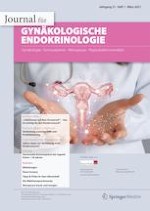19.01.2021 | Gynäkologie und Geburtshilfe | Originalien
Zyklus-Apps: zur Verhütung, zum Kinderwunsch oder doch nur Menstruationskalender?
Erschienen in: Gynäkologie in der Praxis | Ausgabe 1/2021
Einloggen, um Zugang zu erhaltenZusammenfassung
Zyklus-Apps „tracken“ den weiblichen Zyklus, es werden verschiedenste Zyklusparameter aufgezeichnet und das fertile Fenster angezeigt. Damit werden sie nicht nur als Menstruationskalender, sondern auch für Verhütung und Kinderwunsch genutzt. Die Apps lassen sich in drei Kategorien einteilen. 1. Prognose-Apps: Diese sagen das fertile Fenster aus Durchschnittsdaten früherer Zyklen (Zykluslängen oder frühere Temperaturanstiege) vorher und sind als unbrauchbar zu verwerfen. 2. NFP-Apps: Eine sichere natürliche Familienplanung (NFP) ist aktuell mit effektiven Varianten der symptothermalen Methode möglich, die bereits außerhalb von Apps existieren und auf Zervixschleimbeobachtung und Temperaturmessung fußen, verbunden mit einer etablierten Auswertungsmethodik (siehe Empfehlungen der Sektion Natürliche Fertilität der DGGEF). Es gibt entsprechend programmierte Apps, für die jedoch ebenfalls eigene Gebrauchssicherheitsstudien zu fordern sind. 3. Experimentelle Apps: Diese sind mit Messsystemen konnektiert, die Hormone in Urin oder Speichel oder andere Parameter messen, z. B. nächtliche Messung von Pulsrate oder peripherer Körpertemperatur (cave: nicht zu verwechseln mit der Basaltemperatur als Körperkerntemperatur). Die aktuellen Entwicklungen sind überwiegend als experimentell zu bewerten oder haben in bisherigen Studien keine hohe Präzision gezeigt. Die erfolgte FDA-Zulassung einer Verhütungs-App ist wissenschaftlich nicht nachvollziehbar. Für den Kinderwunsch sind Methoden, die einen Östrogenparameter involvieren, geeignet (symptothermale NFP-Apps oder entsprechende Urinhormontests).
Anzeige
